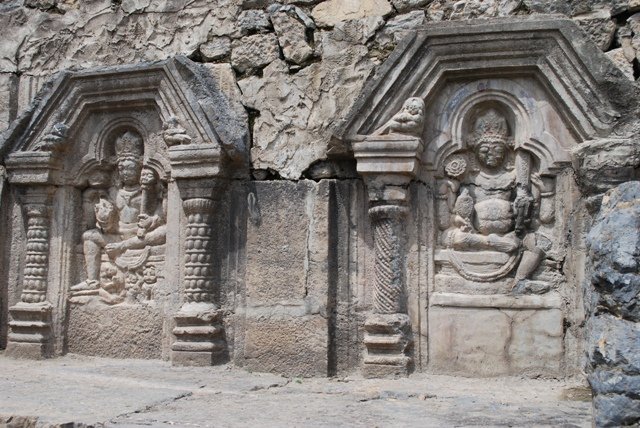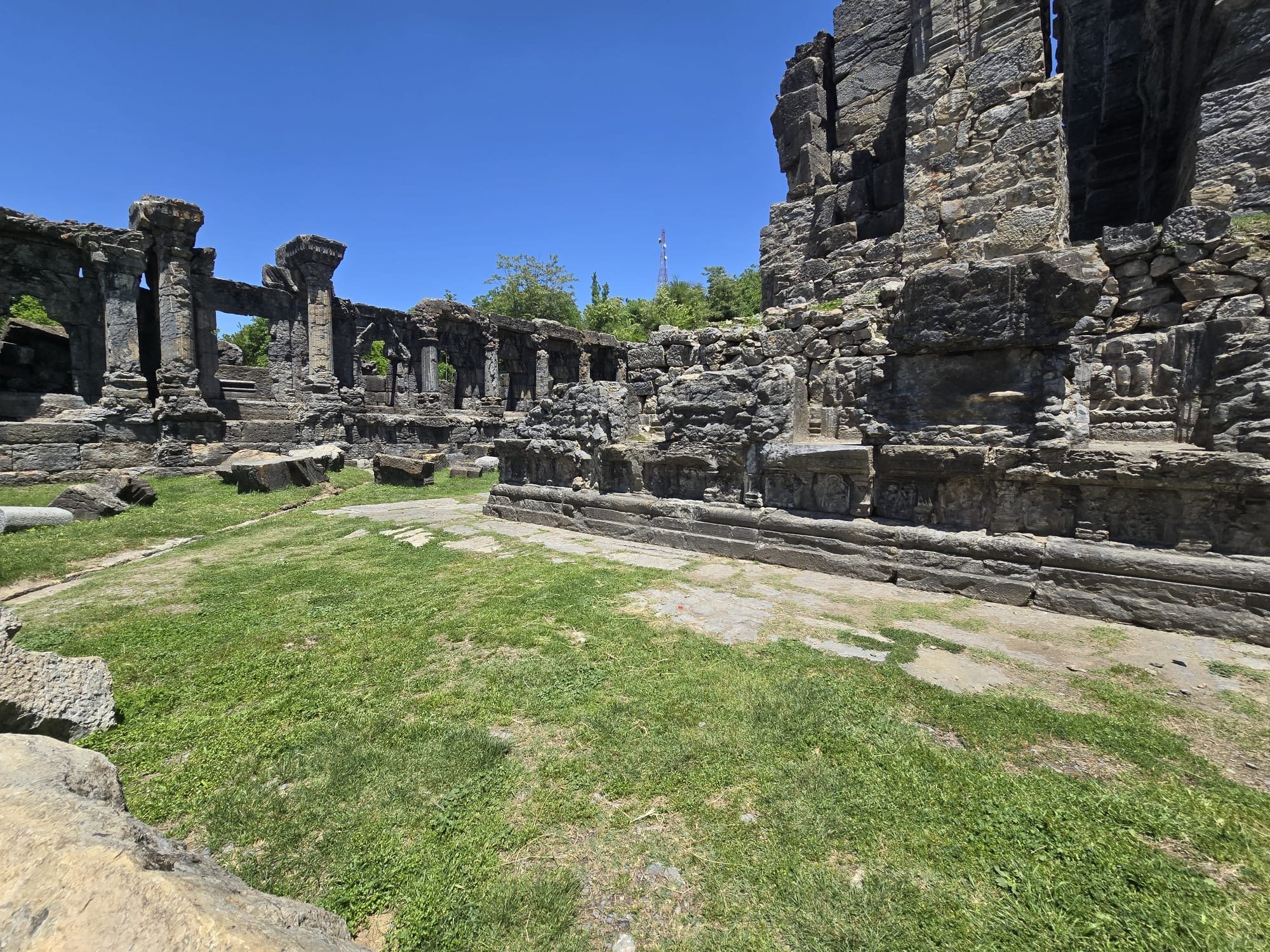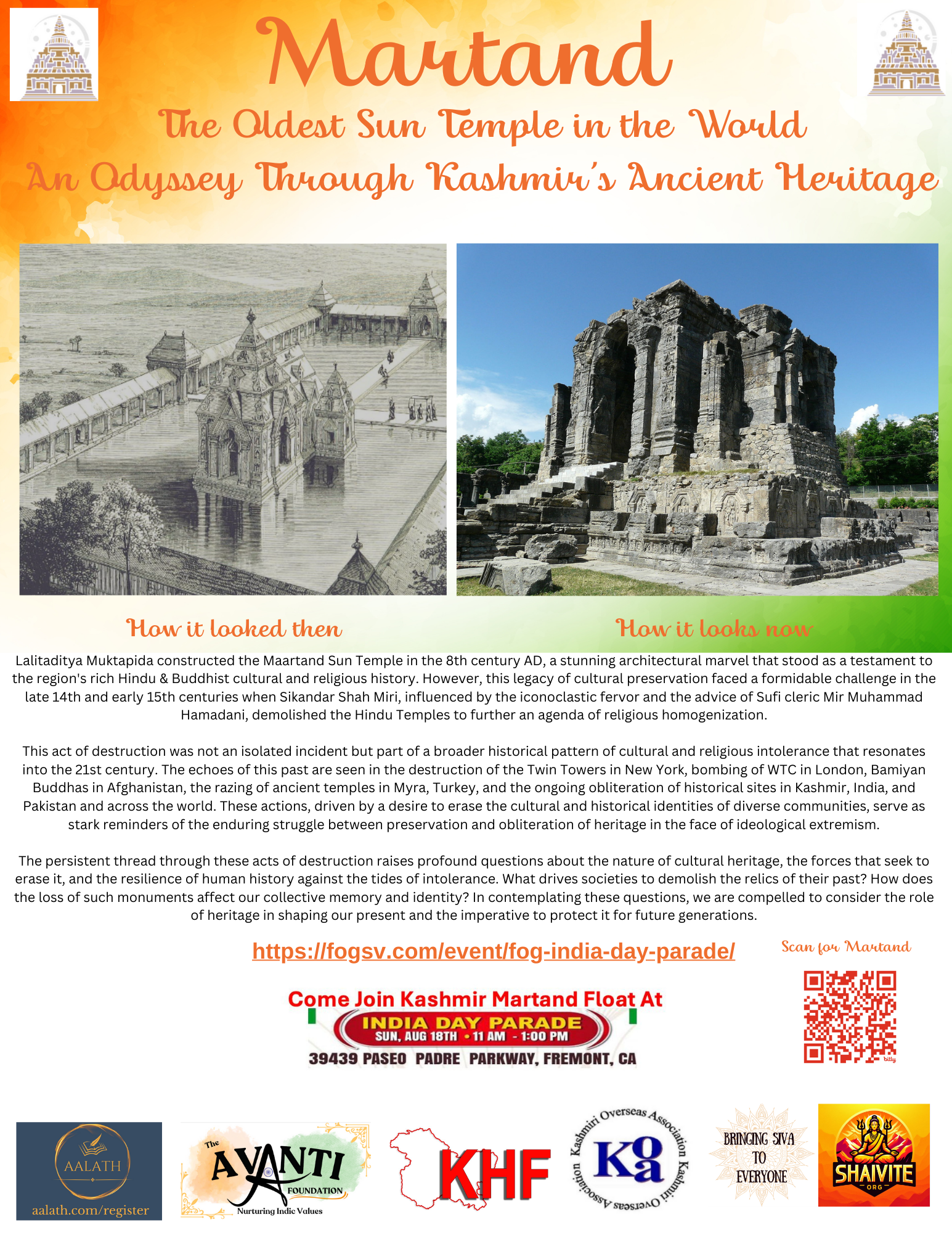Martand
The Oldest Sun Temple in the World. It is our history, our legacy and symbol of our relevance.
Lalitaditya Muktapida constructed the Martand Sun Temple in the 8th century AD. Coming from iconoclastic legacy and heritage, Sikandar Shah Miri (1389-1413) demolished the temple in a bid to Islamize society on the suggestion of a Sufi cleric named Mir Muhammad Hamadani. The legacy of destructive mindset continues even today. Recent examples include a) the demolition of Bamiyan Buddhas in Afghanistan, b) the destruction of old temples in Myra, Turkey and c) Temples of learning and History in Kashmir, India, in Pakistan and world over.

Call To Action
You are summoned to Fremont Downton on August 18th 2024, Sunday morning. Bring your family and friends and stand tall next to your Kashmiri Pandit brothers and sisters. You just need to bring your huge KP attitude and show solidarity with brothers and sisters who are demanding that our heritage be restored to its full glory. Let's offer our strength to rebuild our cultural heritage.

History
Lalitaditya Muktapida constructed the Maartand Sun Temple in the 8th century AD, a stunning architectural marvel that stood as a testament to the region's rich Hindu & Buddhist cultural and religious history. However, this legacy of cultural preservation faced a formidable challenge in the late 14th and early 15th centuries when Sikandar Shah Miri, influenced by the iconoclastic fervor and the advice of Sufi cleric Mir Muhammad Hamadani, demolished the Hindu Temples to further an agenda of religious homogenization.

 This act of destruction was not an isolated incident but part of a broader historical pattern of cultural and religious intolerance that resonates into the 21st century. The echoes of this past are seen in the destruction of the Twin Towers in New York, bombing of WTC in London, Bamiyan Buddhas in Afghanistan, the razing of ancient temples in Myra, Turkey, and the ongoing obliteration of historical sites in Kashmir, India, and Pakistan and across the world. These actions, driven by a desire to erase the cultural and historical identities of diverse communities, serve as stark reminders of the enduring struggle between preservation and obliteration of heritage in the face of ideological extremism.
This act of destruction was not an isolated incident but part of a broader historical pattern of cultural and religious intolerance that resonates into the 21st century. The echoes of this past are seen in the destruction of the Twin Towers in New York, bombing of WTC in London, Bamiyan Buddhas in Afghanistan, the razing of ancient temples in Myra, Turkey, and the ongoing obliteration of historical sites in Kashmir, India, and Pakistan and across the world. These actions, driven by a desire to erase the cultural and historical identities of diverse communities, serve as stark reminders of the enduring struggle between preservation and obliteration of heritage in the face of ideological extremism.
 The persistent thread through these acts of destruction raises profound questions about the nature of cultural heritage, the forces that seek to erase it, and the resilience of human history against the tides of intolerance. What drives societies to demolish the relics of their past? How does the loss of such monuments affect our collective memory and identity? In contemplating these questions, we are compelled to consider the role of heritage in shaping our present and the imperative to protect it for future generations.
The persistent thread through these acts of destruction raises profound questions about the nature of cultural heritage, the forces that seek to erase it, and the resilience of human history against the tides of intolerance. What drives societies to demolish the relics of their past? How does the loss of such monuments affect our collective memory and identity? In contemplating these questions, we are compelled to consider the role of heritage in shaping our present and the imperative to protect it for future generations.


